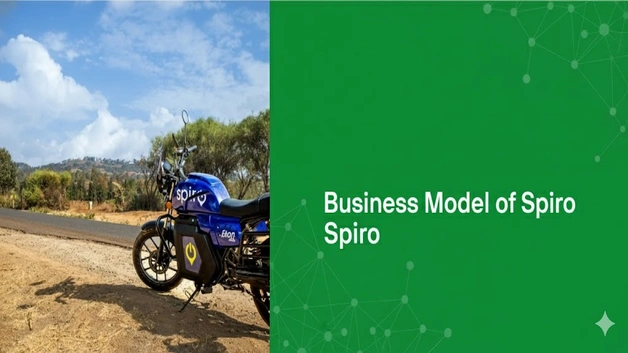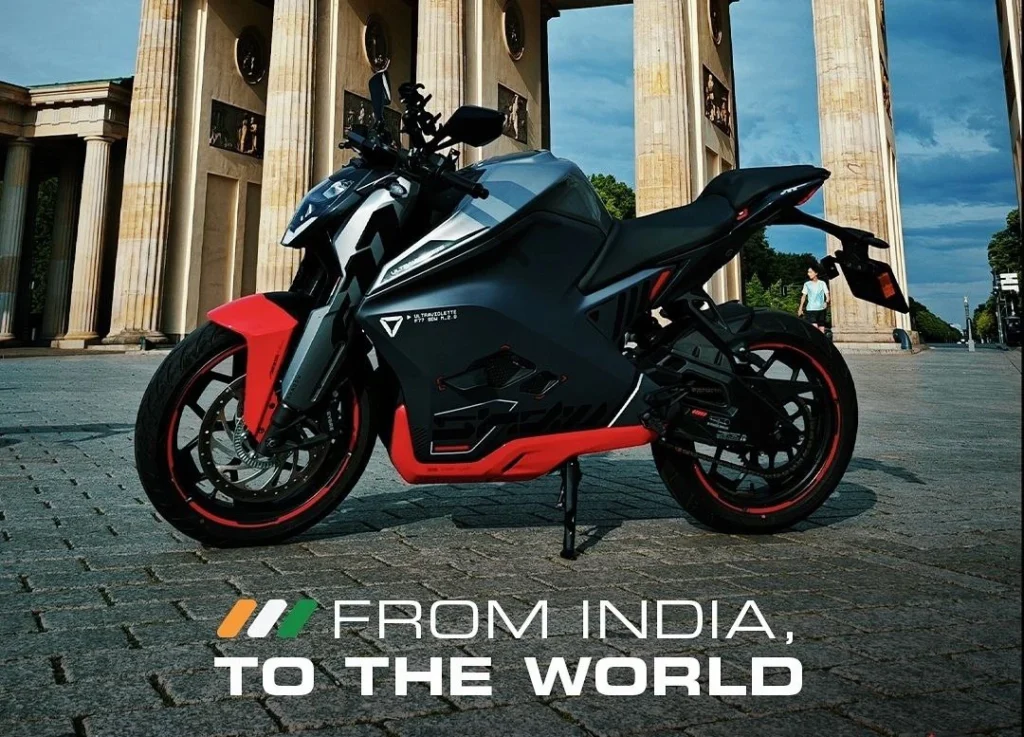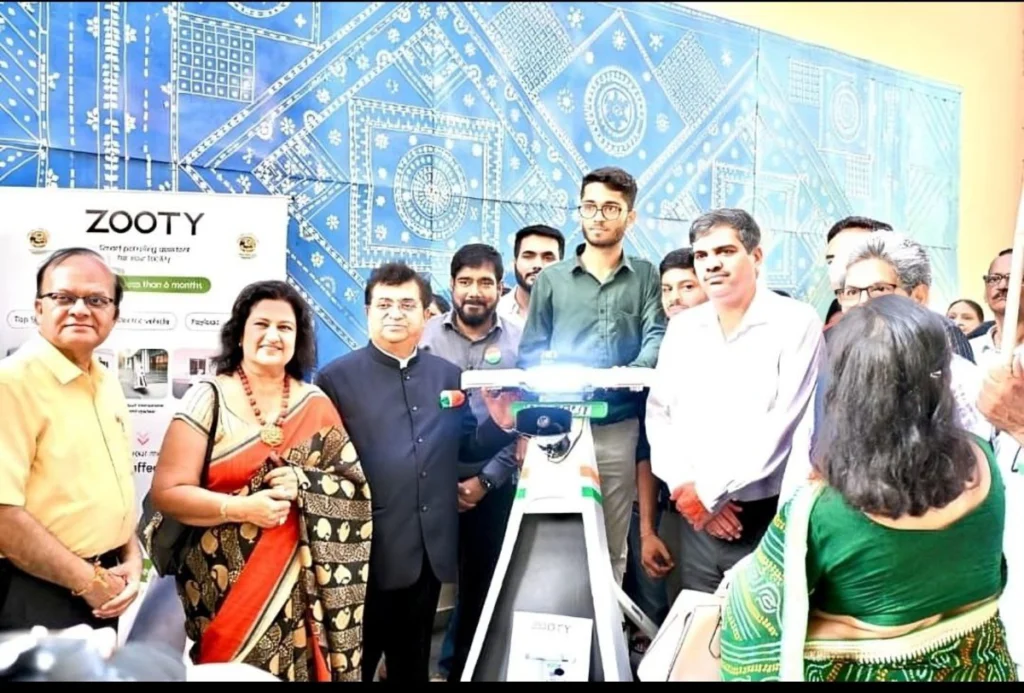| Category | Details |
|---|---|
| How Spiro Started | Business Model Of Spiro: Spiro was founded in Dubai as an electric mobility company targeting African markets, initially operated by parent company Equitane Group before becoming independent entity. The company emerged from recognition that motorcycle taxis—known as boda bodas in Kenya or okadas in Nigeria—move millions through congested African cities daily, with riders spending 10-12 hours covering 150-200 kilometers while fuel costs consume earnings. The founding strategy of Spiro centered on battery-swapping infrastructure rather than charging-dependent models, addressing Africa’s unreliable grid electricity and operational downtime concerns. CEO Kaushik Burman joined two years ago from Taiwanese battery-swapping giant Gogoro when the company had just 8,000 bikes and 150 swap stations, bringing international expertise scaling similar models in Asian markets. Early expansion targeted Kenya and Rwanda before scaling across West, East, and Central African markets. |
| Present Condition of Spiro | Spiro currently operates with $100 million in fresh funding led by The Fund for Export Development in Africa (FEDA) contributing $75 million, bringing total capital raised to $280 million including previous investments exceeding $180 million. Operations span six countries including Kenya, Rwanda, Uganda, Nigeria, Benin, and Togo, with pilots launching in Tanzania and Cameroon. The fleet exceeds 60,000 electric motorcycles supported by 1,200+ battery-swapping stations, having facilitated over 26 million battery swaps and 800 million kilometers of low-carbon travel. Four operational assembly plants produce batteries, traction motors, and controllers across Kenya, Rwanda, Uganda, and Nigeria. The Kenya facility uniquely employs approximately 40 women running the motor assembly line. Local sourcing currently stands at 30% with plans increasing to 70% within two years, encompassing plastics, helmets, and brake components. |
| Future of Spiro and Industry | Plans target deploying over 100,000 vehicles by end of 2025—representing 400% year-over-year increase—while expanding swap stations from current 1,200 to 3,500 locations. Expansion includes Tanzania and Cameroon market entries while deepening penetration in existing six-country footprint. Africa’s electric two-wheeler market valued at $554.68 million in 2023 projects explosive growth to $2.6 billion by 2031 representing 24.78% CAGR. McKinsey and Shell forecast 800,000 EV two-wheeler sales across Ethiopia, Kenya, Nigeria, Rwanda, and Uganda by 2025. Kenya’s electric motorcycle market share reached 7% in 2024, accelerating toward double-digit penetration as government policies support electrification. Africa’s broader two-wheeler market valued at $9.15 billion in 2025 growing to $11.11 billion by 2029, with electric variants capturing accelerating share. The sector represents just 0.5% of global EV two-wheeler sales currently but demonstrates 40% year-over-year growth indicating massive upside potential. |
| Opportunities for Young Entrepreneurs | Young entrepreneurs can leverage the ecosystem through battery maintenance and refurbishment services—extending battery life cycles and creating circular economy opportunities in markets with limited e-waste infrastructure. Charging infrastructure development represents opportunities building solar-powered charging hubs supplying swap stations in off-grid locations. Last-mile delivery services built on electric fleets enable e-commerce logistics addressing urban congestion and delivery economics. Driver training and certification programs teach electric motorcycle operation, maintenance basics, and efficient driving techniques maximizing battery range. Financing and microinsurance products tailored to gig economy riders enable asset ownership and risk mitigation. Component manufacturing including plastics, brake systems, and helmets addresses local sourcing needs as companies increase domestic content from 30% toward 70%. Data analytics services help fleet operators optimize routing, predict maintenance needs, and improve utilization rates. |
| Spiro’s Market Share | Operations span six African countries with 60,000+ motorcycles representing significant but still developing share of continent’s motorcycle taxi market estimated at millions of gasoline-powered vehicles. Kenya achieved 7% electric motorcycle market share in 2024, with the company representing substantial portion of electric segment alongside competitors Ampersand, Roam, and BasiGo. Primary competition comes from traditional gasoline motorcycle manufacturers including Bajaj, TVS, and Honda dominating African markets with affordable internal combustion models priced similarly but lacking operational cost advantages. Emerging electric competitors include Ampersand focusing on Rwanda and Kenya, Roam targeting premium segments, and BasiGo concentrating on electric buses with some two-wheeler operations. Geographic coverage spanning West, East, and Central Africa simultaneously differentiates from competitors focusing on single regions. The 1,200+ swap station network exceeds competitor infrastructure density, creating switching costs for riders depending on ubiquitous locations. |
| Spiro’s MOAT (Competitive Advantage) | Competitive advantages include battery-swapping network of 1,200+ stations creating infrastructure moats competitors cannot replicate quickly—riders swap depleted batteries in under two minutes versus hours of charging downtime. Six-country operational footprint spanning diverse regulatory environments provides geographic diversification and scaling expertise transferable to new markets. Local manufacturing capacity with four assembly plants reduces import dependencies, improves unit economics, and creates tariff advantages versus imported fully built vehicles. Strategic investor backing from FEDA, Afreximbank, Société Générale, and Equitane Group provides patient capital and institutional relationships accelerating market access. First-mover advantages in multiple African markets established brand recognition and rider loyalty before competition intensified. Economic proposition delivers 40% lower upfront costs versus gasoline equivalents plus 30% cheaper per-kilometer operating expenses, creating compelling adoption drivers independent of environmental motivations. Network effects emerge as swap station density increases—more stations attract more riders, generating revenues justifying further expansion in virtuous cycle. |
| How Spiro Makes Money | Revenue generation follows mobility-as-a-service economics with riders paying subscription fees or per-swap charges for battery access rather than purchasing batteries outright. Motorcycle sales or leasing programs provide upfront revenue with bikes priced approximately $800—40% below gasoline equivalents—while maintaining margins through battery service lock-in. Battery-swap transaction fees represent recurring revenue as riders exchange depleted batteries multiple times daily, with 26 million swaps completed demonstrating transaction volume scalability. Fleet partnerships with delivery companies, ride-hailing services, and logistics providers generate bulk contracts providing steady utilization and predictable revenues. Advertising and data monetization opportunities emerge from rider networks and vehicle telematics providing location, usage, and behavioral insights valuable to consumer brands targeting urban populations. Manufacturing services could expand beyond internal needs toward contract assembly for other mobility companies leveraging established production capacity. Government incentives and carbon credits from displacing gasoline consumption provide additional revenue streams as African nations implement climate policies and carbon markets mature. |
I’m Araib Khan, an author at Startups Union, where I share insights on entrepreneurship, innovation, and business growth. This role helps me enhance my credibility, connect with professionals, and contribute to impactful ideas within the global startup ecosystem.




